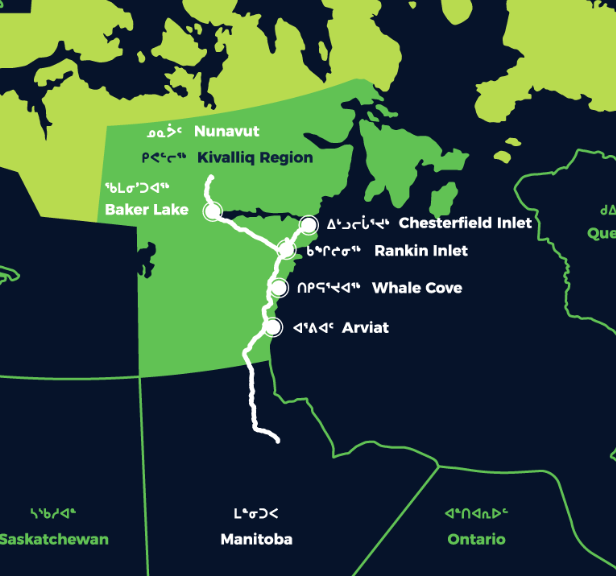Nunavut is taking meaningful steps toward a sustainable future with two major projects that aim to reduce reliance on diesel and cut greenhouse gas emissions.

The Kivalliq Hydro-Fibre Link, led by Nukik Corporation, will connect five Kivalliq communities—Arviat, Baker Lake, Chesterfield Inlet, Rankin Inlet, and Whale Cove—to Manitoba’s hydroelectric grid and broadband network. The project will deliver reliable clean energy and high-speed internet, creating long-term economic opportunities while reducing diesel use and emissions.
In April 2025, a joint statement of cooperation between the Governments of Nunavut and Manitoba helped move the project forward. Manitoba Hydro’s commitment of 50 megawatts of reserve load capacity is a major step toward making the hydro link a reality.

Meanwhile, the Iqaluit Hydroelectric Project, led by Nunavut Nukkiksautiit Corporation with support from Qulliq Energy Corporation, is advancing plans for a sustainable energy facility near the Kuugaluk River. With a projected capacity of 15 to 30 megawatts, the project recently received additional federal support for technical and environmental studies.
Both projects reflect a growing commitment to clean, locally driven energy solutions that will benefit Nunavummiut for generations to come.